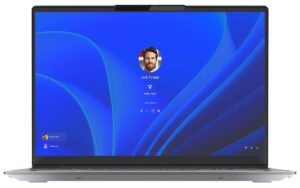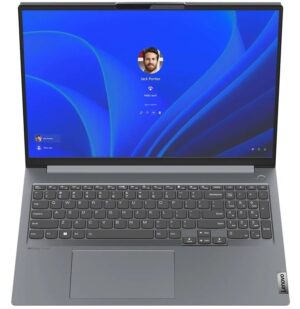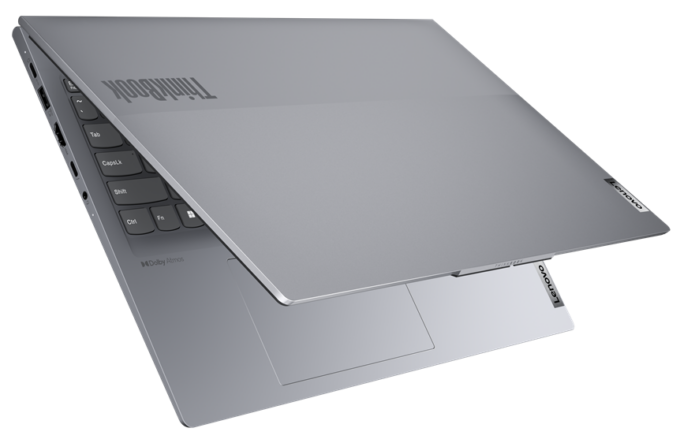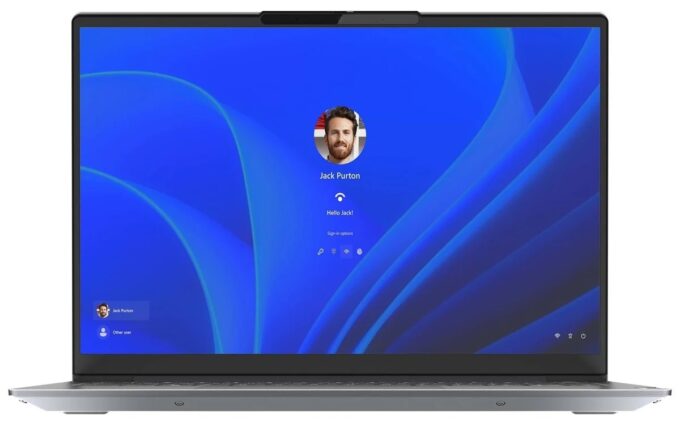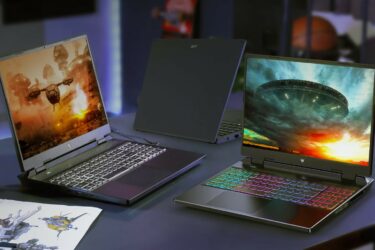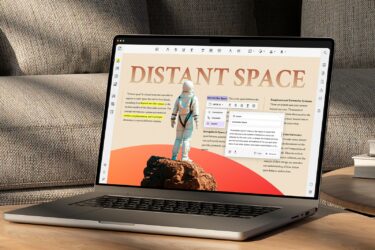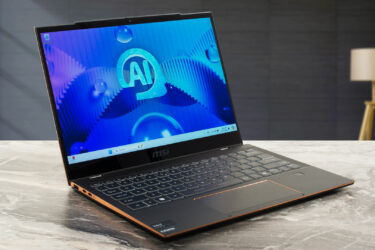[Specs and Info] Lenovo ThinkBook 14 Gen 4+ and ThinkBook 16 Gen 4+: First appearance of the GeForce RTX 2050
 If you want something different than the regular-sized ThinkBooks, the Gen 4+ models offer the same build quality and attention to detail, albeit with a little twist.
If you want something different than the regular-sized ThinkBooks, the Gen 4+ models offer the same build quality and attention to detail, albeit with a little twist.
The two devices that we have today sport taller displays with a 16:10 aspect ratio, and come with a large variety of processors, with representatives from the whole Alder Lake family: the U-series, P-series, and H-series. In terms of graphics, there’s the integrated Iris Xe Graphics G7 with a varying amount of Execution Units, as well as the discrete RTX 2050, which is the first time we’re seeing a notebook with it.
Today we are giving you a quick overview of the Lenovo ThinkBook 14 Gen 4+ and ThinkBook 16 Gen 4+.
Full Specs: Lenovo ThinkBook 14 Gen 4+ / ThinkBook 16 Gen 4+
Lenovo ThinkBook 14 Gen 4+ configurations:
Lenovo ThinkBook 16 Gen 4+ configurations:
Design
The laptops get all the positives from being part of the ThinkBook family, with an aluminum lid and chassis for the two devices. The whole surface is anodized and sandblasted, which results in a very appealing finish. The lid is horizontally split into two parts, one lighter and one darker. The bottom one features the ThinkBook logo, while the top one has a small Lenovo badge in the corner. In terms of dimensions, these notebooks are quite portable capping at a weight of 1.40 kg and 1.80 kg, respectively.
Display
The ThinkBook 14 comes with three displays, with a 16:10 aspect ratio. The base model comes with an FHD+ IPS panel with a 300 nit max brightness, and a 1000:1 contrast ratio. Then we have a 2.2K panel with the same brightness, higher 1500:1 contrast ratio, and 100% sRGB coverage. Lastly, there is a 2.8K panel with a higher 400 nit brightness and contrast ratio and coverage, albeit with a higher 90Hz refresh rate.
Moving over to the ThinkBook 16, it also has an FHD+ display with 300 nits of brightness, but a lower 800:1 contrast ratio. Next, there are two 2.5K panels with a 350 nit max brightness, 1200:1 contrast ratio, and 100% sRGB coverage. One of them also has a 120Hz refresh rate.
Specifications and features
There are a lot of CPU choices, with three Alder Lake U-series processors (Core i3-1215U, Core i5-1235U, Core i7-1255U), and two Alder Lake P-series processors (Core i5-1240P and Core i7-1260P), and two Alder Lake H-series CPUs (Core i5-12500H and Core i7-12700H). We are obviously glad about the large variety, however, we are worried about the cooling capabilities of the two devices, as the more powerful H-series chips require quite the stuff, if you want them to perform adequately.
In terms of graphics, there is the integrated Iris Xe Graphics G7 with either 64, 80, or 96 Execution Units. If most of what you’ll be doing doesn’t require a lot of computing power, they will serve you tight. However, if you want to get into creativity and more strenuous work, you will need the increased performance that the RTX 2050 offers. Despite the 2000-series name, it uses the Ampere architecture, which is a weird move from NVIDIA, maybe in order to bolster sales of the RTX 3050, but they should have used that GPU instead of this one.
We are delightfully surprised to see a wide I/O, with three USB Type-A ports (one 2.0 and two 3.2 Gen. 1), a USB Type-C 3.2 (Gen. 2) port, and a Thunderbolt 4 port, an HDMI 2.0b port, a MicroSD card reader, an Ethernet port, and a 3.5 mm combo jack.
Lenovo ThinkBook 14 Gen 4+ seria
- Wymiary
- 312 x 224 x 15.9 - 16.5 mm (12.28" x 8.82" x 0.63")
- Waga
- 1.40 kg (3.1 lbs)
- Cena
- Not Available
Lenovo ThinkBook 16 Gen 4+ seria
- Wymiary
- 356 x 251 x 16.5 - 16.9 mm (14.02" x 9.88" x 0.65")
- Waga
- 1.80 kg (4 lbs)
- Cena
- Not Available
